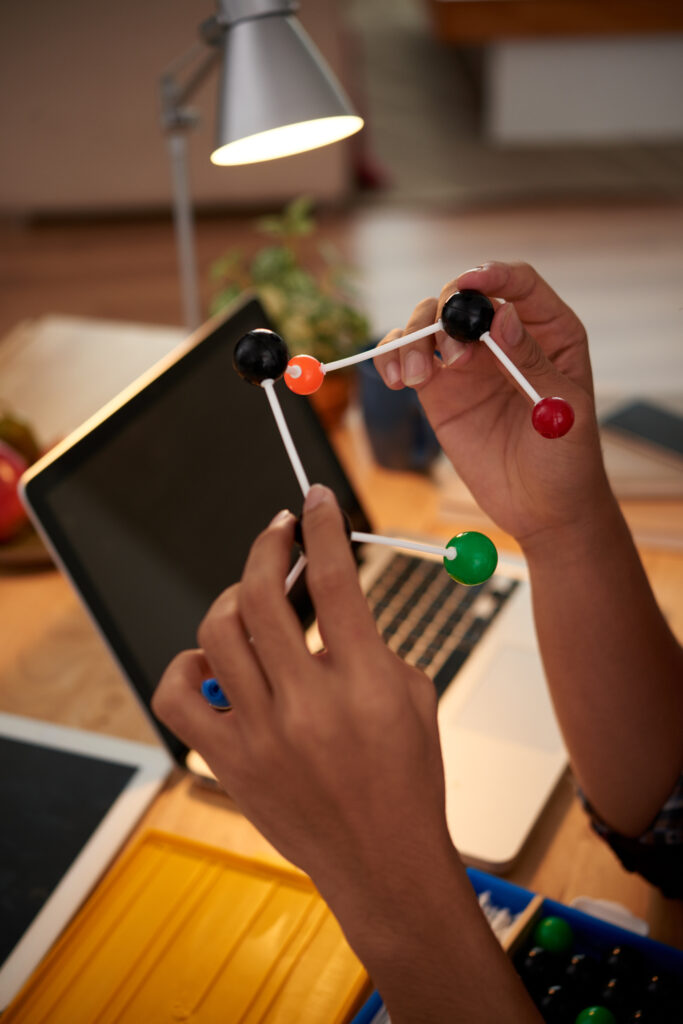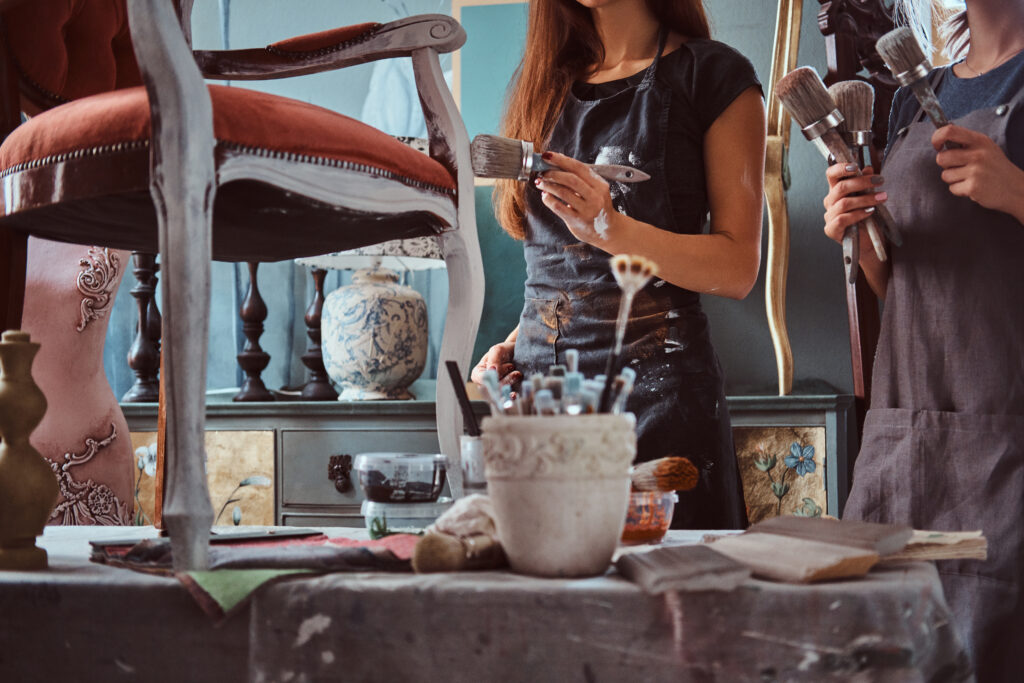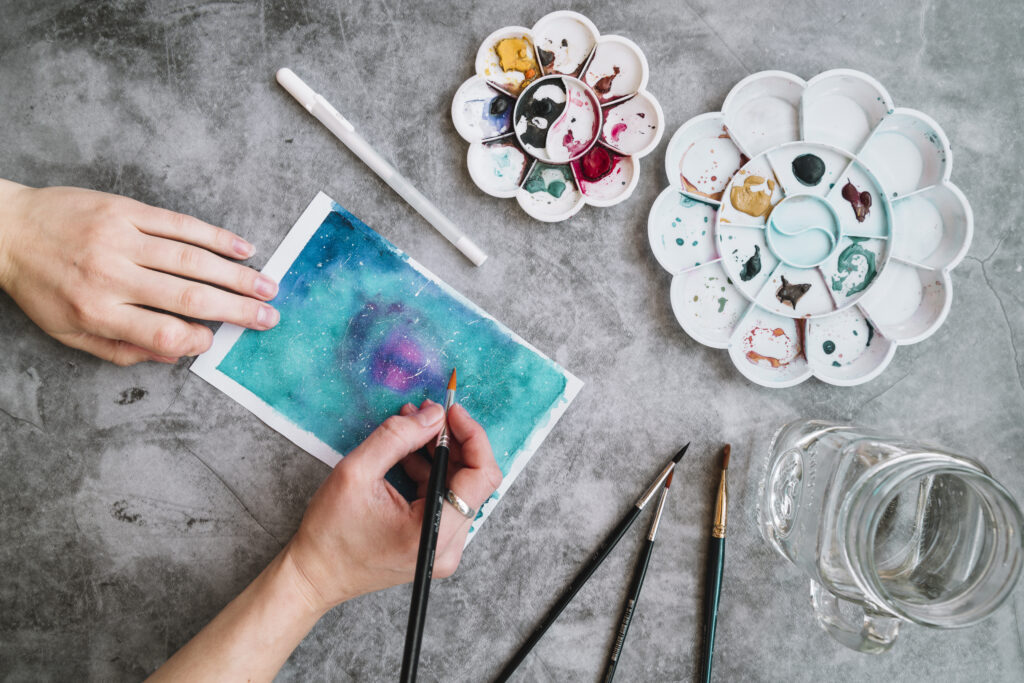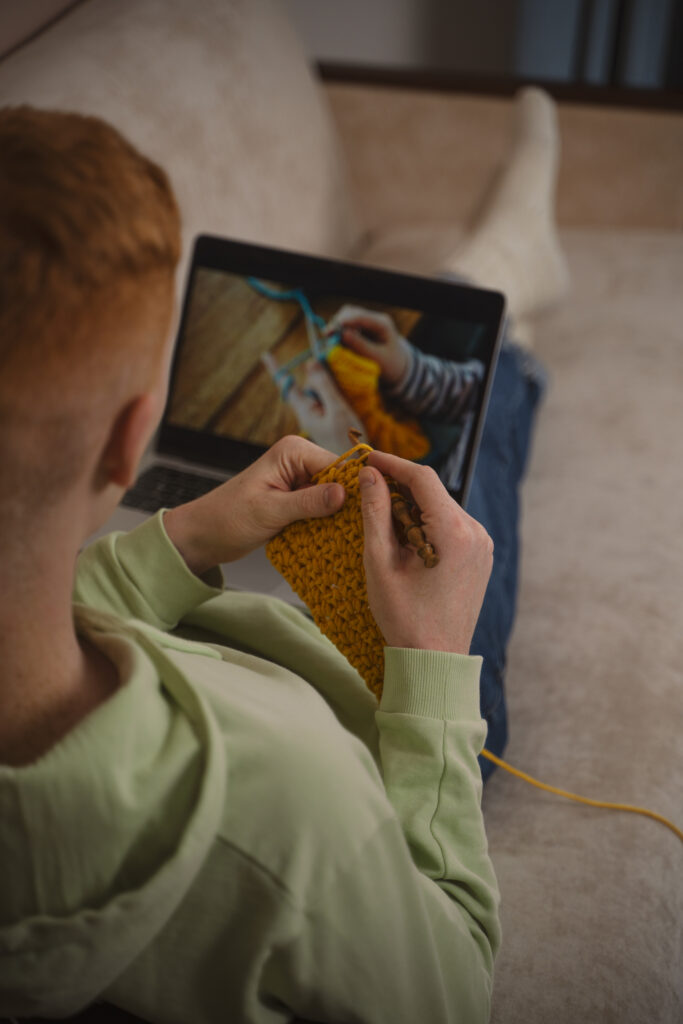Unlocking Creativity: 15 AI-Driven Collaborative Endeavors
In recent years, Generative Adversarial Networks (GANs) have revolutionized the field of digital art, enabling the synthesis of visuals that blur the boundary between human and machine creativity. Artists and technologists are harnessing these algorithms’ power to craft strikingly original works, raising essential questions about the nature of artistry in the digital age.
As we stand on the cusp of this artistic frontier, it is crucial to master the intricacies of GANs to exploit their potential fully. The forthcoming discourse aims to elucidate 14 pivotal tips for creating digital art with GANs, covering the spectrum from foundational understanding to advanced manipulation techniques. These insights will equip practitioners with the necessary skills to navigate the complex landscape of algorithmic art and open the floor to a broader discussion on the implications of this emergent form of expression.
However, before one can fully harness the transformative power of GANs, it is essential to appreciate their capabilities and limitations, a balance that this dialogue intends to explore.
Key Takeaways
- Choosing the correct dataset is crucial for shaping the neural pathways of a GAN.
- Diversity and representation in the dataset expand creative horizons and promote cultural inclusivity.
- Dataset size influences the diversity and realism of the GAN-generated art.
- Fine-tuning and managing training parameters are essential for optimizing GAN training.
Understand GAN Fundamentals

Diving into the core of Generative Adversarial Networks (GANs), we unveil a dynamic duel between two neural networks—the Generator and the Discriminator—each honing its algorithmic prowess in a game of digital mimicry and discernment.
This intricate dance of code and data unfolds as the generator strives to fabricate data indistinguishable from reality, crafting digital chimeras pixel by pixel. Simultaneously, the discriminator tries with equal enthusiasm to peel away the veneer of artificiality, sharpening its analytical understanding to discern the genuine from the synthetic.
Within this adversarial crucible, GANs emerge as an avant-garde of machine learning, challenging the traditional boundaries of human creativity and algorithmic generation. The networks engage in a perpetual cycle of creation and critique, learning from each clash, refining strategies, and escalating their capabilities in an arms race of artificial intelligence.
Understanding GANs is akin to mastering a new art form; it begins with the foundational theory expounded in Goodfellow’s seminal work, extends through the technical intricacies of machine learning, and culminates in the practical orchestration of TensorFlow or PyTorch. Through this process, GANs evolve, painting a future where art and algorithms converge in a symphony of generative wonder.
Choose the Right Dataset

Selecting an optimal dataset is pivotal in sculpting the neural pathways of a Generative Adversarial Network. It defines the aesthetic boundaries within which digital artistry can flourish.
A meticulously curated dataset, both ample in volume and rich in quality, ensures a nuanced and textured learning environment. It fosters an AI that can produce intricate and authentic creations.
Striving for diversity and representation within this dataset expands the creative horizon. It also instills a sense of cultural inclusivity in the resulting generative art.
Dataset Size Matters
Often overlooked, choosing an appropriately sized dataset is fundamental in training Generative Adversarial Networks (GANs) for digital art creation.
A robust corpus of images—teeming with a spectrum of styles, subjects, and compositions—empowers GANs to generate art that pushes the boundaries of diversity and realism.
The axiom ‘more is better’ typically holds, as larger datasets provide a rich training ground for GANs to learn and replicate the multifaceted nature of art.
Yet, this quest for volume must be tempered by the pragmatic constraints of computational resources and training durations.
Through meticulous preprocessing and curation, artists and technologists can sculpt the dataset to refine the aesthetic quality of the GAN-generated imagery, ensuring each pixel embodies artistic intent and technical finesse.
Curate Quality Data
The cornerstone of generating evocative digital art through GANs is the meticulous curation of a dataset that resonates with the desired artistic expression and upholds diversity and quality standards. To curate quality data is to wield the brush of innovation, shaping the canvas upon which GANs will create stunning visual narratives.
| Consideration | Description |
|---|---|
| Artistic Alignment | Select datasets that mirror the intended style or genre. |
| Ethical Legality | Use data that is free from legal and ethical encumbrances. |
| Preprocessing Needs | Refine datasets by removing extraneous elements. |
Through this careful assemblage, artists, and technologists collaborate, ensuring that the data from which artistry blooms is not just a collection of pixels but a symphony of curated experiences poised to mesmerize.
Diversity and Representation
Building upon the foundation of quality curation, the quest for diversity and representation in GAN-generated digital art mandates a deliberate choice of datasets encompassing a tapestry of artistic styles and cultural narratives.
A well-considered dataset serves as the crucible for generative alchemy, where the diversity of artists, genres, and historical periods coalesce to imbue the GAN with the ability to generate images that are not only aesthetically varied but culturally resonant.
Preprocess Your Data

The meticulous data preprocessing process sets the stage for the alchemy of GANs in digital art creation.
By purging datasets of inconsistencies and refining image formats, we sculpt the raw clay of raw pixels into a pristine canvas ready for the generative process.
This foundational step ensures that the neural networks perceive a harmonious symphony of data, essential for the emergence of coherent and captivating artificial masterpieces.
Data Cleaning Essentials
Before diving into the creative possibilities of generative adversarial networks (GANs) for digital art, it’s crucial to meticulously preprocess your data, ensuring a clean, error-free foundation that will influence the quality of the final artwork.
The dance of creation between the generator and the discriminator hinges on the purity of their shared canvas—your data. Engage in the art of learning through data refinement:
- Understand Data Structure
- Identify errors or inconsistencies
- Unveil patterns that may direct the aesthetic flow
- Handle Missing Values
- Impute with statistical harmony (mean, median, mode)
- Consider the philosophical choice of omission
- Standardize and Normalize
- Uniform scales for a seamless generative performance
- Equalize units to allow diverse elements to converse
Art arises from precision as much as from chaos; clean data sets the stage for creative serendipity.
Consistent Image Formatting
Delving into digital art creation with GANs, adopting a rigorous approach to image formatting becomes imperative, ensuring a consistent visual vocabulary that facilitates the network’s learning process.
Uniformity in image size, color space, and resolution is the canvas upon which the GANs’ generator produces its intricate tapestry of pixels. Resizing, cropping, and normalizing are not mere preludes but essential techniques that harmonize the dataset into a coherent symphony of similar images, each a variation on a theme.
This disciplined preprocessing paves the way for the GAN to learn and replicate the aesthetic nuances more efficiently. Properly formatted datasets are the cornerstone of stable and reliable GAN training, leading to the generation of compelling and high-quality digital art.
Select an Appropriate Model

How does one navigate the complex landscape of Generative Adversarial Networks to select a model that captures the essence of artistic vision and aligns with the practical constraints of data and computing resources? The key lies in a confluence of technical discernment and creative intuition.
- Understand GAN Capabilities
- Evaluate the diversity of styles that a GAN model can emulate
- Assess the fidelity and resolution of images the generator can produce
- Explore the novelty of content that can be generated
- Consider Practical Constraints
- Analyze the size and quality of your dataset—does it match the GAN model’s requirements?
- Determine the computational resources you have at your disposal
- Reflect on the training time necessary for the GAN model to converge
- Stay Informed and Innovative
- Investigate pre-trained models or GAN variants designed explicitly for an artistic generation.
- Keep abreast of cutting-edge research and emerging GAN models in the art domain.
- Experiment with hybrid models that blend different GAN architectures for unique outcomes
In this technical odyssey, the suitable GAN model becomes a profound collaborator—a digital alchemist’s crucible where raw data transmutes into visual poetry.
Customize the Architecture
Embarking on the journey of GAN customization, artists and technologists tweak the neural sinews, layer by intricate layer, to forge architectures that resonate with their creative ambitions and computational realities. The interplay between the generator and the discriminator—the yin and yang of GANs—becomes a canvas for innovation. Adjusting the depth and breadth of Neural Networks within these adversarial cohorts allows for a nuanced control over the generative process.
Experimentation is vital; varying configurations and layers yield a spectrum of visual outputs. While the discriminator scrutinizes each creation, ensuring fidelity to the artistic domain, the generator evolves, learning from each critique. This dance of construction and deconstruction is underpinned by a delicate balance—the trade-off between the computational demand of training and the quality of the resultant art.
Advanced techniques like conditional GANs and progressive GANs provide a scaffold for artists to climb, reaching new heights of specificity and detail. For those seeking a head start, pre-trained architectures offer a foundation ripe for the artist’s unique touch. Here, transfer learning is not just a shortcut; it’s a strategic choice to channel creative energy where it matters most—into the art itself.
Experiment With Latent Space
Navigating the intricate dimensions of latent space unlocks a spectrum of artistic potential within GAN-generated imagery. By meticulously fine-tuning vector inputs, artists wield the power to morph and refine digital canvases, tailoring them to their creative intent.
The process of visualizing latent transformations becomes a confluence of technology and artistry, charting new territories in the realm of digital aesthetics.
Exploring Latent Dimensions
Delving into the latent dimensions of Generative Adversarial Networks (GANs) uncovers a realm where digital artists can meticulously sculpt the attributes of their creations, fine-tuning elements like style and texture with the precision of a master craftsperson—the interplay of latent dimensions and random noise seeds the ground for innovation.
- Manipulation Techniques
- Dimensional Isolation: Focusing on individual latent dimensions to adjust specific features.
- Synchronized Shifts: Moving several dimensions in harmony to maintain thematic consistency.
- Noise Injection: Introducing random noise to discover serendipitous variations.
The convergence of technical prowess and artistic intuition enables the exploration of a previously unfathomable digital landscape, where each adjustment of the latent dimensions weaves a unique tapestry of visual expression, transcending traditional boundaries of artistry.
Fine-Tuning Vector Inputs
Building on the intricacies of latent dimensions, fine-tuning vector inputs emerges as a pivotal method for artists to exert granular control over the visual nuances of GAN-generated artwork.
By delving into the depths of latent space, creatives can calibrate the aesthetic dials of their digital canvas, manipulating the characteristics and features that give rise to their Art with AI.
This practice resembles a painter mixing precise colors to produce realistic shades and tones.
The possibility to customize and personalize through this technique empowers artists to imprint their signature style onto the GAN’s output, ultimately influencing the style, content, and aesthetic of the art in a deliberate and nuanced manner.
Visualizing Latent Transformations
Experimentation within latent space serves as a creative catalyst, enabling artists to visualize and harness the transformative potential of GANs in their digital artistry. This process, rooted in deep learning and computer vision, allows for the intricate exploration of the generative model’s capabilities.
- Navigating the Latent Landscape:
- Exploration: Delve into the boundless realm of latent dimensions.
- Manipulation: Alter the latent variables to mold the artistic output.
- Discovery: Uncover the relationships between latent space and visual features.
Through this innovative approach, artists understand how subtle shifts within the GAN’s latent space can lead to dramatic transformations in their digital creations, embodying the true essence of computational creativity.
Manage Training Parameters
Mastering the manipulation of training parameters is crucial for honing the generative capabilities of GANs, where fine-tuning elements such as the learning rate and batch size can significantly influence the quality and creativity of the resulting digital art. The learning rate acts as a chisel in the sculptor’s hand, delicately determining the magnitude of parameter updates during the intricate dance of training. It should be adjusted precisely, as too ambitious a rate may lead to erratic model behavior. At the same time, too cautious an approach might not capture the full spectrum of artistic expression.
In the symphony of pixels, the batch size orchestrates the balance between the computational melody of training speed and the memory’s harmony. Smaller ensembles of data—smaller batch sizes—offer a more nuanced update to the model’s parameters, albeit at the expense of a slower tempo. In contrast, larger cohorts expedite the process but may overlook subtle nuances in the dataset’s visual narrative.
To ensure the narrative does not become monotonous or diverge into chaos, the conductor—the artist—must regulate the epochs, the repetitive cycles of training, averting overfitting’s echo or underfitting’s silence. Employing tools like weight clipping or gradient penalty, GANs are coaxed into stability, avoiding the cacophony of erratic loss landscapes.
For those seeking a masterpiece, hyperparameter optimization techniques, such as grid or random search, provide a palette to methodically explore and perfect the hues of training parameters, crafting images and visions that resonate with the digital zeitgeist.
Monitor GAN Convergence
As the digital brushstrokes of the GANs’ artistry are refined through epochs, diligent monitoring of the convergence becomes pivotal, with the artist tracking the generator and discriminator’s loss curves to ensure a harmonious evolution towards artistic clarity. The canvas of the neural network is complex, where each parameter tweak is a stroke of paint, and the resulting generated images are masterpieces to behold.
Innovative creators know that to monitor GAN convergence is to understand the intricate dance between two neural networks:
- Visualization of Progress
- Plot Loss Curves: Chart generator and discriminator losses to detect harmony or discord.
- Identify Patterns: Recognize convergence or divergence and adjust the tempo accordingly.
Quality Assurance
- Diverse Outputs: Scrutinize the gallery of generated images for variety, a defense against mode collapse.
- Inspect Details: Zoom in on the fidelity of each image; crispness is critical.
Stability Techniques
- Gradient Penalty/Spectral Normalization: Apply these to tune the networks’ rhythm.
- Hyperparameter Symphony: Each change is a note that could lead to the opus of optimal convergence.
In this symphony of pixels, the artist-engineer becomes the maestro, wielding computational tools to sculpt digital landscapes that push the boundaries of imagination.
Address Mode Collapse
In generative adversarial networks, combatting mode collapse is akin to ensuring a painter’s palette holds a full spectrum of colors, essential for crafting diverse digital masterpieces.
When GANs succumb to mode collapse, the generator’s output becomes monotonous, stifling the creativity it’s meant to simulate. The artistic potential of GANs hinges on their ability to generate a rich tapestry of results, each as unique as a brushstroke.
One must employ a blend of technical ingenuity and artistic intuition to address mode collapse. Architectural tweaks, such as introducing additional layers or modifying connections within the generator, can provide a more nuanced canvas for expression. Like an artist refining their technique, regularization methods instill discipline in the generator, preventing it from fixating on a limited set of patterns.
Hyperparameter adjustments fine-tun the artist’s tools, guiding the GAN toward a more balanced and expansive creation process. Utilizing a diverse training dataset is like drawing inspiration from various sources, ensuring the generator’s repertoire is as varied and vibrant as the world.
In essence, these strategies converge to ensure that GANs can genuinely emulate the boundless imagination of the digital artist.
Utilize Transfer Learning
Transfer learning, the process of applying knowledge garnered from one domain to enhance performance in another, emerges as a pivotal technique in the evolution of GANs for digital artistry. By harnessing the power of pre-existing neural networks, artists and developers can embark on a journey of creative exploration without training models from scratch. This approach saves time and computational resources and opens up a universe of stylistic possibilities.
- Explore Pre-Trained GAN Models:
- Assess the expansive library of GAN architectures available.
- Select models that resonate with your artistic vision.
- Understand the nuances of each model’s training data and generated style.
- Fine-Tuning for Artistic Expression:
- Adapt neural networks to embody specific aesthetics or genres.
- Employ subtle adjustments to infuse your unique creative signature.
- The balance between retaining learned patterns and introducing novel elements.
- Leveraging Existing Knowledge:
- Experiment with the amalgamation of different artistic styles.
- Realize the efficiency of transfer learning in generating complex art.
- Recognize the potential for novel juxtapositions not previously conceived.
In this digital renaissance, transfer learning becomes an essential palette knife, carving out new pathways for artistic expression within the canvas of GANs.
Apply Data Augmentation
Harnessing the transformative power of data augmentation, artists can exponentially enrich the training landscape for GANs, fostering the generation of digital art with unprecedented diversity and realism. This creative alchemy involves manipulating source material through various transformations—rotation, flipping, scaling, and the infusion of noise—each technique a brushstroke that broadens the GAN’s experiential canvas. As these algorithms ingest a more heterogeneous array of images, their output transcends into a realm where each piece of art embodies a higher degree of intricacy and resonates with a more authentic aesthetic verisimilitude.
Data augmentation is a pivotal strategy in the artist’s digital toolkit to combat the specter of overfitting. The GAN learns to abstract its perceptions and generalize across a spectrum of artistic styles and expressions by introducing nuanced distortions. This process shapes a more resilient neural network capable of conjuring novel visual narratives that push the boundaries of contemporary digital art.
In pursuing such innovation, conditional data augmentation emerges as a bespoke technique. Tailored transformations are selectively applied to align with specific artistic visions, giving rise to targeted art generation. Further enriching this procedural palette, methods like cutout, random erasing, or mixup are engaged to seed the training set with a fertile diversity, thus empowering GANs to render a cornucopia of unique and compelling digital masterpieces.
Fine-Tune With Hyperparameters
Delving into the intricacies of hyperparameter tuning unveils a critical layer in the evolution of GAN-generated digital art, where each parameter adjustment is a calculated step toward refining artistic expression and algorithmic stability. The interplay between art and neural mechanisms becomes increasingly complex as we fine-tune the elements that dictate the GAN’s performance.
- Learning Rate
- Impact: Governs the pace of neural network weight updates, influencing convergence speed and quality.
- Techniques: Employ a scheduler to adjust the rate adaptively or experiment with different fixed rates.
- Batch Size
- Impact: Affects memory usage and training dynamics, balancing resource constraints and model robustness.
- Techniques: Tune to optimize computational efficiency while maintaining generation fidelity.
- Layer Dimensions
- Impact: Determines the network’s capacity to learn and represent nuances in art, impacting the depth of generated features.
- Techniques: Adjust to enhance the neural network’s richness and detail in capturing artistic styles.
Through grid and random search methods, artists and machine learning practitioners explore this hyperparameter landscape, seeking an optimal configuration that marries artistic vision with neural network efficacy. Monitoring these adjustments is crucial in sculpting the GAN’s ability to manifest digital art that resonates with both the creator’s intent and the audience’s perception.
Explore Different Loss Functions
Exploring the diverse landscape of loss functions is paramount for optimizing the Generative Adversarial Networks (GANs) training process and achieving high-quality digital art generation. The intricacies of GANs’ loss functions are not merely a mathematic formula; they are the guiding forces that shape the artistic capabilities of these neural networks.
By delving into the Wasserstein loss function, artists and developers can harness its potential to stabilize GAN training, offering a smoother path toward model convergence and, consequently, more coherent visual creations.
In pursuing artistic excellence, incorporating feature matching loss becomes an innovative tactic to align the generator’s output with the statistical heartbeat of accurate data distribution. This strategic move pushes the boundaries of authenticity in digital art, ensuring that the nuances of genuine textures and patterns are echoed in the synthetic masterpieces.
Meanwhile, the hinge loss emerges as a savior against the GANs’ notorious foes: vanishing gradients and mode collapse. Its sharpness slices through the challenges, ensuring robust gradients that sustain the diversity of generated art.
Lastly, the perceptual loss takes on the role of the artisan, capturing the essence of high-level image features to elevate the visual narrative of GAN-generated canvases, thus refining the digital brushstrokes that bring artificial imagination to life.
Post-Processing Techniques
While the intricate loss functions of GANs lay the foundation for creating compelling digital art, it is through post-processing techniques that these creations are refined and elevated to their full aesthetic potential. The convergence of technical precision and artistic intuition becomes apparent as artists employ these techniques to polish and perfect their GAN-generated imagery.
- Enhancement and Refinement
- Adjust color balance and contrast to intensify visual dynamics.
- Sharpen edges and fine details to heighten clarity and definition.
- Smooth out gradients to achieve a more cohesive and natural look.
- Stylistic Transformation
- Implement filters to impart a unique atmosphere or mood to the art.
- Modify saturation and hues for a more striking or subtle palette.
- Infuse textures to add a tactile dimension to digital canvases.
- Artifact Correction
- Identify and eliminate generative anomalies, such as noise or unintended patterns.
- Retouch areas where the GAN may have produced irregularities.
- Ensure continuity and seamlessness across the composition.
Innovative and artistic, these post-processing techniques allow for the transformation of raw GAN outputs into masterpieces tailored to specific creative visions. By meticulously adjusting and manipulating the generated images, artists can achieve unparalleled detail and emotional resonance, which is essential for captivating digital artistry.
FAQs
What is a GAN (Generative Adversarial Network)?
A GAN is a type of neural network architecture consisting of two components, a generator, and a discriminator, trained in an adversarial manner. The generator creates realistic data, and the discriminator evaluates it, leading to increasingly practical outputs.
How can GANs be used for crafting digital art?
GANs can be used for crafting digital art by training the model on diverse visual art datasets and generating new images. Artists can experiment with different GAN architectures, hyperparameters, and techniques to achieve unique and visually appealing results.
What is the significance of diverse datasets in GAN-based digital art?
Diverse datasets contribute to the richness and variety of the generated digital art. Exposure to various styles, subjects, and compositions during training allows the GAN to learn and produce more varied and exciting outputs.
Why is experimenting with hyperparameters important in GAN art creation?
Experimenting with hyperparameters, such as learning rates and network architectures, is crucial to finding the optimal settings for a specific artistic goal. Fine-tuning these parameters can significantly impact the quality and style of the generated digital art.
How can style transfer be implemented with GANs in digital art?
Style transfer with GANs involves combining one image’s content with another’s style. By training a GAN with a diverse dataset that includes different artistic styles, artists can explore blending and transferring these styles to create unique digital art.
